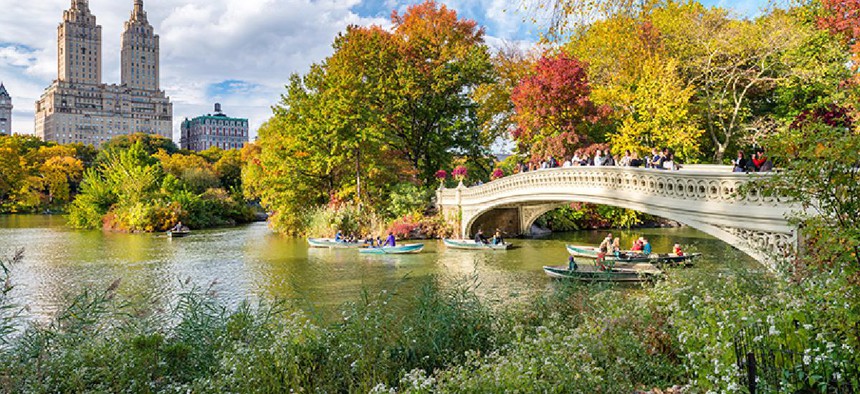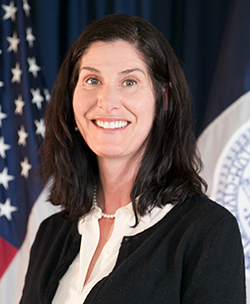A greener New York City

Gagliardi Images / Shutterstock
As deputy commissioner of sustainability at the New York City Department of Environmental Protection, Angela Licata works to make New York City greener, figuratively and literally. She oversees the implementation of the city’s Green Infrastructure Plan, which builds new sustainable structures and focuses on preserving the city’s natural assets. In an interview with City & State, Licata talked about her work in making New York City more sustainable, and reaching out to New Yorkers through social media to teach environmental awareness.
C&S: How do you work with the mayor’s office of sustainability on conservation projects? What current projects is your office working on?
AL: Green infrastructure is a big part of the mayor’s sustainability plan. Green infrastructure is a natural method for collecting and managing stormwater runoff from streets, sidewalks, parking lots and rooftops, and directing it to rain gardens and other methods that retain and detain water. Green infrastructure helps keep the harbor the cleanest it has been in a century, reduce combined sewer overflows, lower the urban heat island effect, green communities and provide recreational spaces. DEP’s amazing partnership with the Trust for Public Land is an example of how green infrastructure achieves all of these goals. DEP helps TPL transform asphalt schoolyards into state-of-the-art green spaces that have running tracks, fields, park equipment and the ability to manage hundreds of thousands of gallons of rainwater annually. Part of the planning process involves getting the students of each school to advise designers on what they would like in the schoolyard, which is really fun.
RELATED: How much longer can politicians ignore climate change?
 C&S: Could you speak a little about stormwater management through green infrastructure – what does that entail?
C&S: Could you speak a little about stormwater management through green infrastructure – what does that entail?
AL: DEP’s $1.5 billion Green Infrastructure Program is the largest, most ambitious green infrastructure program in the country. The program is a major investment in creating a greener, more sustainable city. At DEP, we have over 3,800 green infrastructure assets built or in construction. We take every chance we can to capture and retain, or at least detain, stormwater before it has a chance to get to our sewer system. We work closely with many other city agencies, including the Department of Education, Department of Parks and Recreation and (the city) Housing Authority. An example of the impact these partnerships have can be seen in our collaboration on the Parks Department’s Community Parks Initiative. DEP is adding 400 water-saving timers to spray showers and other features to 45 CPI parks across the city, which will save about 1.1 million gallons of water per day from entering the sewers and provide cool summertime fun to countless children across the five boroughs.
Another essential step DEP has taken to reduce stormwater and increase green infrastructure is the 2012 “stormwater performance standard.” The standard requires new construction and significant renovations to detain or retain stormwater on-site, which will significantly reduce stormwater flows to sewers and reduce combined sewer overflows.
C&S: How do you work to encourage sustainability among New Yorkers?
AL: For the last several years, DEP has been implementing the Water Demand Management Plan, which aims to reduce citywide water consumption through 2021. To encourage water conservation on private properties, we started a voucher-based program to replace 100,000 outdated residential toilets that can use up to five gallons of water per flush with high-efficiency models, which use only 1.28 gallons of water per flush.
In addition, to keep our harbor trash-free, we recently introduced the Don’t Trash Our Waters public education campaign. Don’t Trash Our Waters educates New York City residents about how litter can end up in our waterways and hurt local wildlife like whales and turtles. The program launched in partnership with the New York Aquarium and Department of Sanitation in Coney Island, and is expanding to the Bronx. On social media, we are launching a Don’t Trash Our Waters competition that challenges New Yorkers to share photos of how they are helping to keep our streets and waterways trash free by posting photos and using #DontTrashOurWaters. The photo with the most likes wins DEP swag and two passes for a tour to the top of the iconic digester eggs at the Newtown Creek Wastewater Treatment Plant. So remember #DontTrashOurWaters!
NEXT STORY: The water supply